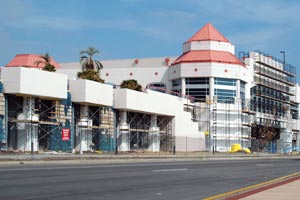|
Coverage Concerns Business income insurance Lost earnings and extra expenses—a sizeable exposure By Roy C. McCormick
Many businesses fail to survive a lengthy period of lack of income because they have neglected to invest in what once was called business interruption insurance. Recently, a combination of circumstances has increased the potential for even greater losses of earnings. Widespread catastrophic damage from natural disasters together with an extended building boom have brought about shortages of contractors and workers, as well as building supplies. These uncertain rebuilding prospects make the future even more grim for many uninsured businesses. Citing the difficulties experienced by some can provide valuable guidelines for others and can drive home the importance of business income (earnings) insurance for small and medium-sized businesses. (Although large corporations and chain-related businesses are likely to have the protection, proper limits can be a major consideration for them.) Owners of relatively small businesses can look to the coverage and economy of the commercial counterpart of homeowners insurance, the businessowners (package) policy. Especially important is the basic inclusion of business income insurance. There are definite classification and underwriting considerations for writing a BOP (businessowners policy), including size and activity. Loss and underwriting experience have contributed to similarity in eligibility rules for policies drafted by the American Association of Insurance Services (AAIS), the Insurance Services Office (ISO) and independently designed policies. The program developed by ISO is representative and, subject to modification by individual insurers, establishes broad categories for BOP eligibility: small and medium-sized apartment and residential condominium associations, office and office condominium associations, mercantile risks, wholesale operations, small or artisan contractors, small fast-food or limited cooking restaurants, and convenience stores with laundry and/or dry cleaning operations. Some service and processing operations are eligible. A BOP provides extensive building and business personal property coverage and broad liability insurance. Property insurance is on a replacement cost basis without coinsurance provisions. We refer to the AAIS policy for loss of earnings coverage for particulars, which are similar in other policies. “Loss of earnings” covers on an “actual loss sustained” basis. Some insurers will optionally write it for a limit specified in the declarations. Unless a dollar limit has been specified in the declarations, business income or loss of income insurance covers the actual loss sustained by the interruption of operations during the period of restoration, within 12 consecutive months following the date of direct loss or damage. Because of the broad coverage, underwriting information in the application must be accurate. BOP policies also cover extra expenses incurred during the restoration period that contribute to the resumption of normal business activities. They include: rent for operation at an alternative location; a friendly competitor’s performance of services normally provided by the insured; the additional cost of expediting the delivery of material for the resumption of business; cost to research, replace or restore information or valuable papers and records. Businesses that don’t fit the eligibility profile for businessowners policies because of classification limitations or underwriting considerations can obtain the protection that they need under commercial property policies (ISO), commercial output policies (AAIS) or programs developed by insurers. They are adaptable to all manufacturing, industrial, institutional and commercial operations. Because time element coverage is a portion of these commercial programs, eligibility for business income coverage is the same as that for property coverages in the programs. It is important that the declarations accurately describe the locations for which coverage is intended and that there be no uncertainty regarding buildings that are covered for property damage and loss of earnings. A matter of concern is a building(s) incidental to the prime location described in the declarations. Unless policy provisions or declarations are modified to include such structures, earnings loss generated by covered damage is not covered at the additional location. A warehouse where equipment and supplies are kept for an insured business is a good example. Unless it is identified as covered under the insured’s policy, loss of earnings by the business is not covered by insurance applicable to the premises specified in the policy declarations. Court decisions make it clear that coverage should be applied to all buildings used by the insured that have the potential for contributing to substantial loss of earnings. A businessowners policy is sound protection for eligible small and mid-sized businesses with respect to cover-age for loss of earnings. It is necessary that income data in an application for businessowners insurance be accurate to support coverage on an actual loss sustained basis. Limits for business income insurance under commercial policies for businesses not eligible for businessowners policies must be fixed with care. They must reflect the actual exposure, as indemnification for earnings loss is not on an actual loss sustained basis. * The author |
||
|



